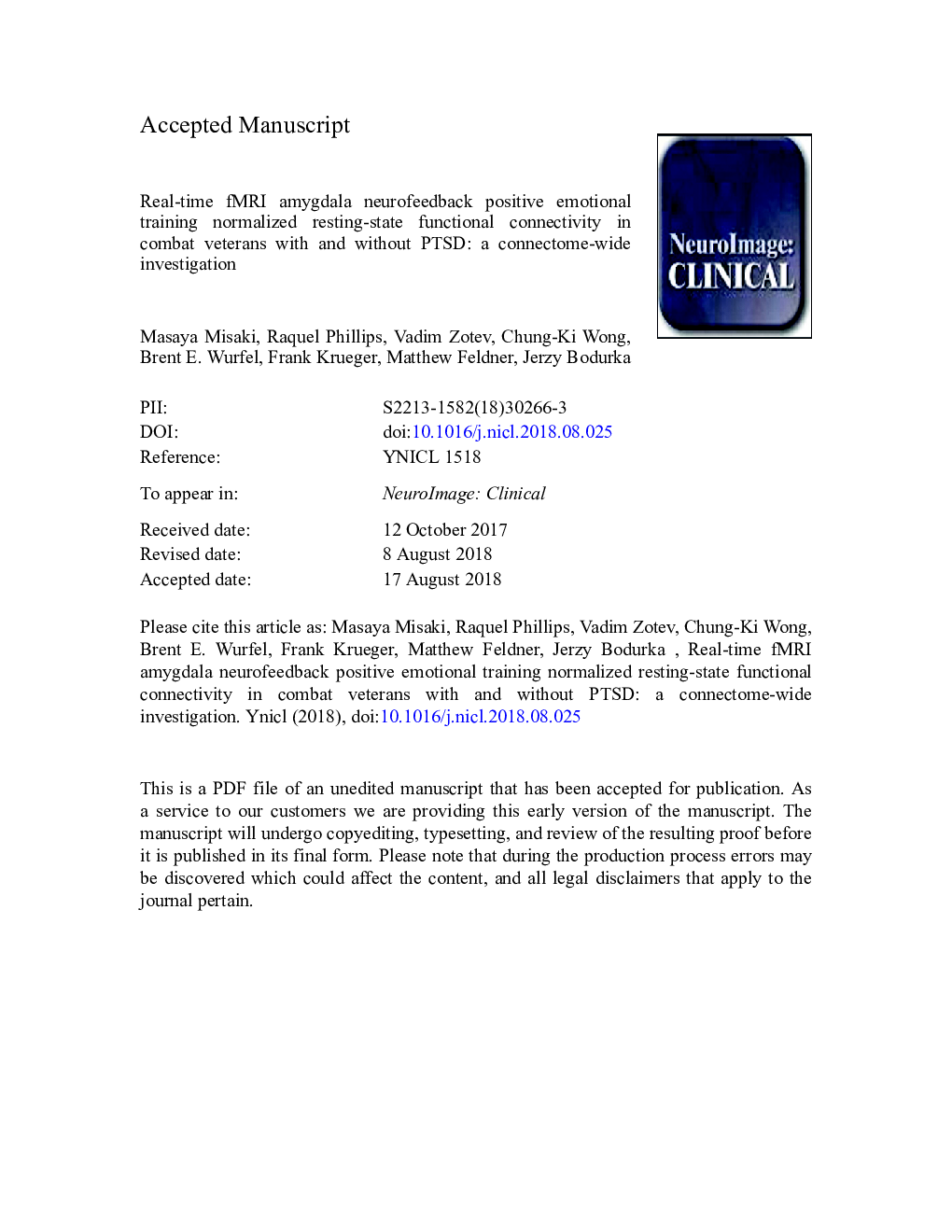| Article ID | Journal | Published Year | Pages | File Type |
|---|---|---|---|---|
| 9990941 | NeuroImage: Clinical | 2018 | 50 Pages |
Abstract
These comprehensive exploratory analyses suggested that abnormal resting-state connectivity for combat veterans with PTSD was partly normalized after the training. This included hypoconnectivities between the left amygdala and the left ventrolateral prefrontal cortex (vlPFC) and between the supplementary motor area (SMA) and the dorsal anterior cingulate cortex (dACC). The increase of SMA-dACC connectivity was associated with PTSD symptom reduction. Longitudinal MDMR analysis found a connectivity change between the precuneus and the left superior frontal cortex. The connectivity increase was associated with a decrease in hyperarousal symptoms. The abnormal connectivity for combat veterans without PTSD - such as hypoconnectivity in the precuneus with a superior frontal region and hyperconnectivity in the posterior insula with several regions - could also be normalized after the training. These results suggested that the rtfMRI-nf training effect was not limited to a feedback target region and symptom relief could be mediated by brain modulation in several regions other than in a feedback target area. While further confirmatory research is needed, the results may provide valuable insight into treatment effects on the whole brain resting-state connectivity.
Related Topics
Life Sciences
Neuroscience
Biological Psychiatry
Authors
Masaya Misaki, Raquel Phillips, Vadim Zotev, Chung-Ki Wong, Brent E. Wurfel, Frank Krueger, Matthew Feldner, Jerzy Bodurka,
